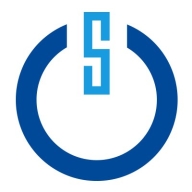

ServiceNow Security Operations and CRITICALSTART operate in the security management space. ServiceNow excels in integration and workflow automation, while CRITICALSTART is superior in threat detection and response.
Features: ServiceNow Security Operations is highly regarded for seamless IT integration, intuitive workflow automation, and efficient incident response solutions. CRITICALSTART stands out with real-time threat detection, a robust managed detection and response system, and superior customer service support.
Room for Improvement: ServiceNow could enhance user interface simplicity, expand real-time capabilities, and reduce initial setup complexity. CRITICALSTART may improve broader integration options, UI speed for quicker navigation, and further customize mobile app functionality.
Ease of Deployment and Customer Service: ServiceNow Security Operations offers flexible deployment with comprehensive support, thanks to extensive documentation and a wide partner network. CRITICALSTART simplifies deployments with personalized onboarding focused on security needs and is known for responsive, customized service.
Pricing and ROI: ServiceNow Security Operations typically requires a higher initial investment due to extensive integration features but offers considerable ROI through workflow automation. CRITICALSTART provides cost-effective pricing aimed at rapid time-to-value, delivering potential quicker ROI in security-focused environments.
| Product | Market Share (%) |
|---|---|
| ServiceNow Security Operations | 3.5% |
| CRITICALSTART | 0.3% |
| Other | 96.2% |

| Company Size | Count |
|---|---|
| Small Business | 4 |
| Midsize Enterprise | 3 |
| Large Enterprise | 4 |
| Company Size | Count |
|---|---|
| Small Business | 6 |
| Midsize Enterprise | 2 |
| Large Enterprise | 15 |
The cybersecurity landscape is growing more complex by the day with the arrival of new threats and new tools supposedly designed for combating them. The problem is it’s all creating more noise and confusion for security professionals to sort through.
CRITICALSTART is the only MDR provider committed to eliminating acceptable risk and leaving nothing to chance. They believe that companies should never have to settle for “good enough.” Their award-winning portfolio includes end-to-end Professional Services and Managed Detection and Response (MDR). CRITICALSTART MDR puts a stop to alert fatigue by leveraging the Zero Trust Analytics Platform (ZTAP) plus the industry-leading Trusted Behavior Registry, which eliminates false positives at scale by resolving known-good behaviors. Driven by 24x7x365 human-led, end-to-end monitoring, investigation and remediation of alerts, their on-the-go threat detection and response capabilities are enabled via a fully interactive MOBILESOC app.
ServiceNow Security Operations is a cutting-edge security solution designed to elevate organizations' security incident response (SIR) processes through automation and orchestration. Going beyond traditional SOAR, this comprehensive Security Operations Suite integrates seamlessly with other ServiceNow products and offers a wide array of features. Its components include Security Incident Response (SIR), which automates incident workflows and offers pre-built playbooks; Security Configuration Compliance (SCC), continuously scanning and automating compliance tasks; Vulnerability Response (VR), prioritizing and remediating vulnerabilities; Threat Intelligence (TI), aggregating threat data for proactive threat hunting; and additional features like IT Service Management integration, Machine Learning and AI, reporting, and a mobile app. The benefits span improved incident response speed, reduced mean time to resolution, increased security posture, enhanced compliance, collaborative synergy between security and IT teams, and operational cost reductions.
We monitor all Security Orchestration Automation and Response (SOAR) reviews to prevent fraudulent reviews and keep review quality high. We do not post reviews by company employees or direct competitors. We validate each review for authenticity via cross-reference with LinkedIn, and personal follow-up with the reviewer when necessary.